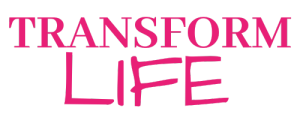Using visuals for Speech Therapy is a powerful and effective strategy for communication development, especially for individuals who may face challenges in expressive or receptive language skills. Visual aids can support communication in various settings and for people of all ages, including children with speech and language disorders, individuals with autism spectrum disorders, and those with other communication difficulties.
Here are ways in which visuals can be utilized for communication development:

Communication Boards:
Create communication boards with pictures or symbols representing common needs, activities, or objects. These boards can be personalized to an individual’s specific interests and preferences.
Communication boards play a crucial role in speech therapy by providing alternative means of communication, supporting language development, increasing independence, facilitating social interaction, and serving as versatile tools for assessment and intervention.
Visual Schedules:
Develop visual schedules to help individuals understand and anticipate daily routines or activities. Visual schedules provide a visual timeline, aiding in transitions and reducing anxiety.
Visual schedules serve as valuable tools in speech therapy by supporting communication, promoting independence, and enhancing overall learning and development for individuals and children with speech and language difficulties.
Social Stories:
Use social stories with visual cues to explain social situations, expectations, and appropriate behaviors. Social stories are beneficial for individuals with autism to understand and navigate social interactions.
Social stories are valuable tools in speech therapy for promoting social skill development, reducing anxiety, improving communication, fostering perspective-taking, enhancing predictability, supporting generalization of skills, and providing individualized intervention for individuals with social communication difficulties.
Visual Timers:
Utilize visual timers to represent the duration of an activity or the time remaining before a transition. Visual timers provide a concrete representation of time, aiding in time management and reducing anxiety.
Visual timers are valuable tools in speech therapy for promoting time management, task completion, self-regulation, anxiety reduction, attention and focus, managing transitions, developing executive functioning skills, and accommodating different learning styles.
They enhance therapy sessions by providing a structured and supportive framework for individuals to maximize their communication and learning potential.
Visual Supports for Verbal Instructions:
Pair verbal instructions with visual supports, such as pictures or icons, to enhance understanding. Visuals can clarify verbal information, making it more accessible for individuals with language difficulties.
Visual support for verbal instruction is an essential component of speech therapy, as it enhances comprehension, clarifies concepts, aids memory retention, increases engagement, supports different learning styles, promotes independence, reduces anxiety, and facilitates the generalization of skills.
By combining verbal and visual modalities, speech therapists can effectively support individuals with speech and language difficulties in learning and communication.
Visual Choice Boards:
Offer visual choice boards to allow individuals to make decisions by pointing to or selecting pictures of preferred activities, snacks, or items. Choice boards empower individuals to express their preferences and make independent choices.
Visual choice boards are essential resources in speech therapy for facilitating communication, supporting decision-making, expanding vocabulary, promoting functional communication, reducing communication barriers, enhancing social interaction, increasing engagement, and adapting to different settings.
By incorporating choice boards into therapy sessions, speech therapists can empower individuals with speech and language difficulties to communicate effectively and participate actively in their environments.
Symbol-Based Communication Systems:
Implement symbol-based communication systems, such as PECS (Picture Exchange Communication System), which uses pictures or symbols for communication. Symbol systems can be used to request, comment, and engage in social interactions.
Symbol-based communication systems are essential resources in speech therapy for supporting communication, language development, independence, social interaction, and participation for individuals with speech and language difficulties.
By incorporating symbol-based systems into therapy sessions, speech therapists can empower individuals to communicate effectively and achieve their communication goals.
Visual Pacing Boards:
Create visual pacing boards to help individuals with speech disorders regulate their speech rate and improve articulation. Pacing boards visually represent the rhythm and timing of speech.
Visual pacing boards support fluency management, regulating speech rate, increasing awareness of speech patterns, promoting self-regulation, and providing immediate visual feedback. By incorporating pacing boards into therapy sessions, speech therapists help individuals improve their fluency and achieve their communication goals.
Visual Reinforcement:
Use visual reinforcement systems, such as token boards or reward charts, to motivate and reinforce positive behaviors or achievements. Visual reinforcement provides a clear connection between behavior and reward.
Visual reinforcement helps by reinforcing targeted behaviors, providing immediate feedback, facilitating learning, increasing compliance and participation, promoting generalization, and individualizing speech therapy to meet any unique needs.
By adding visual reinforcement strategies into therapy sessions, speech therapists help individuals progress towards their communication goals in a positive and rewarding manner.
Visual Supports in Education:
In educational settings, integrate visuals into lessons to support understanding and participation. Visual aids can enhance comprehension of academic concepts and instructions.
Remember, the effectiveness of visual supports may vary, and it’s crucial to tailor the approach to the individual’s needs and preferences. Regular collaboration with speech therapists, educators, and other professionals can help create a comprehensive and personalized visual communication plan.

Transform Life is a NDIS registered organisation that provides speech therapy support for your child, as well as support to you as a parent to best navigate the challenges your child and family face on a daily basis.
Book your consult with an experienced Speech Therapist at Transform Life to explore how Speech Therapy can support you and your family.







